
The Skull · Anatomy and Physiology
The skull is a bone protective cavity for the brain. [1] The skull is composed of four types of bone i.e., cranial bones, facial bones, ear ossicles and hyoid bone, however two parts are more prominent: the cranium ( pl.: craniums or crania) and the mandible. [2]

7.2 The Skull Anatomy and Physiology
Recommended video: Anatomy of the skull [10:46] Introduction to the bones that make up the skull. Skull Cranium 1/2 Synonyms: none The human skull consists of 22 bones (or 29, including the inner ear bones and hyoid bone) which are mostly connected together by ossified joints, so called sutures.

Human Skull Diagrams 101 Diagrams
The skull is a bony structure that supports the face and forms a protective cavity for the brain. It is comprised of many bones, which are formed by intramembranous ossification, and joined by sutures (fibrous joints).

The Skull Anatomy and Physiology
The skull is the most complex arrangement of bones within the body. It protects the central nervous system, the oral cavity and nasal cavity, the ears and the eyes within its inner, outer and directly related structures. Without this protective helmet, we humans would be 'sitting ducks', as the old phrase goes. This article will mention the most important aspects of the skull, taking into.
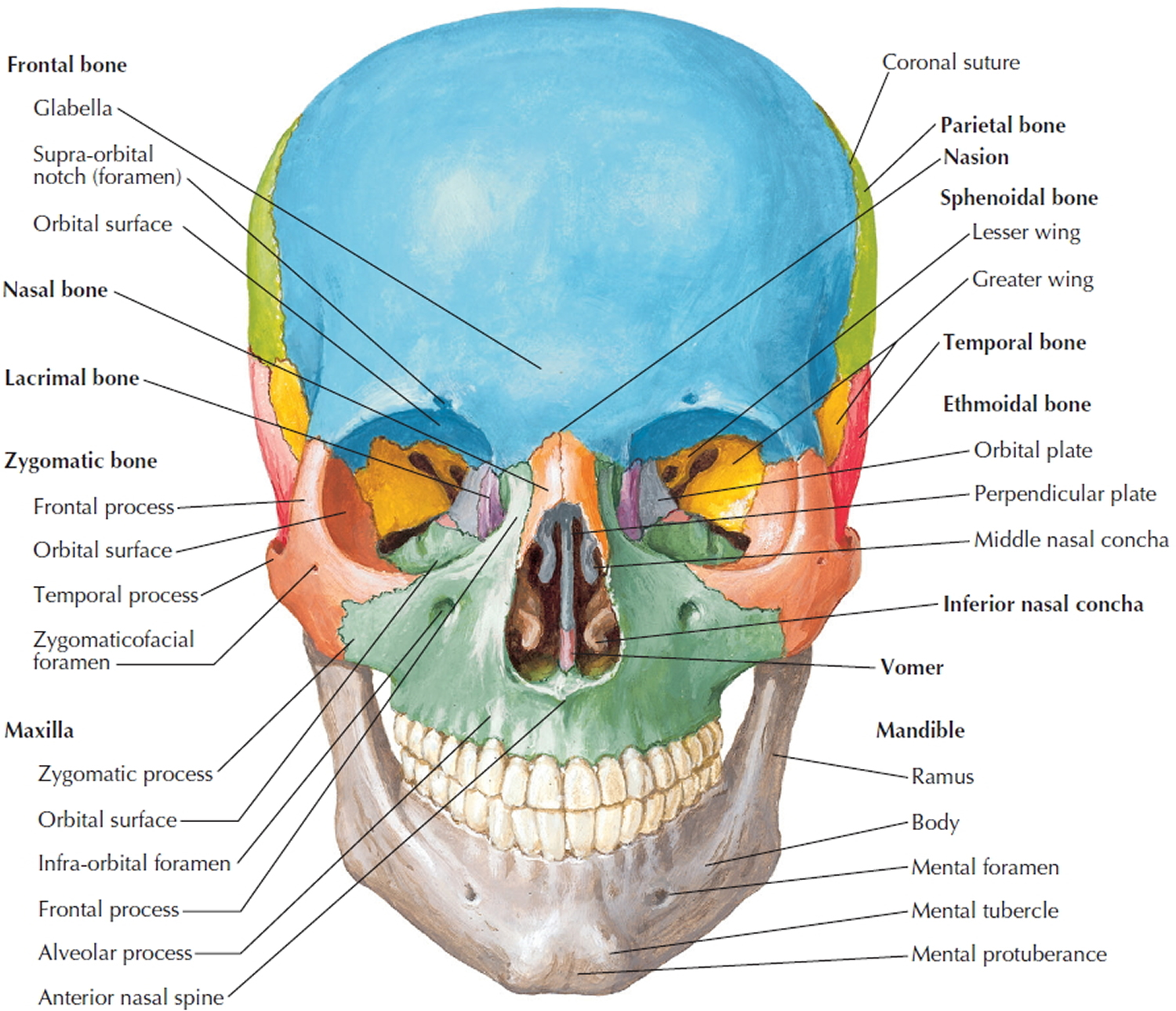
Human Skeleton Skeletal System Function, Human Bones
Skull. The skull is composed of 22 bones that are fused together except for the mandible. These 21 fused bones are separate in children to allow the skull and brain to grow, but fuse to give added strength and protection as an adult. The mandible remains as a movable jaw bone and forms the only movable joint in the skull with the temporal bone.
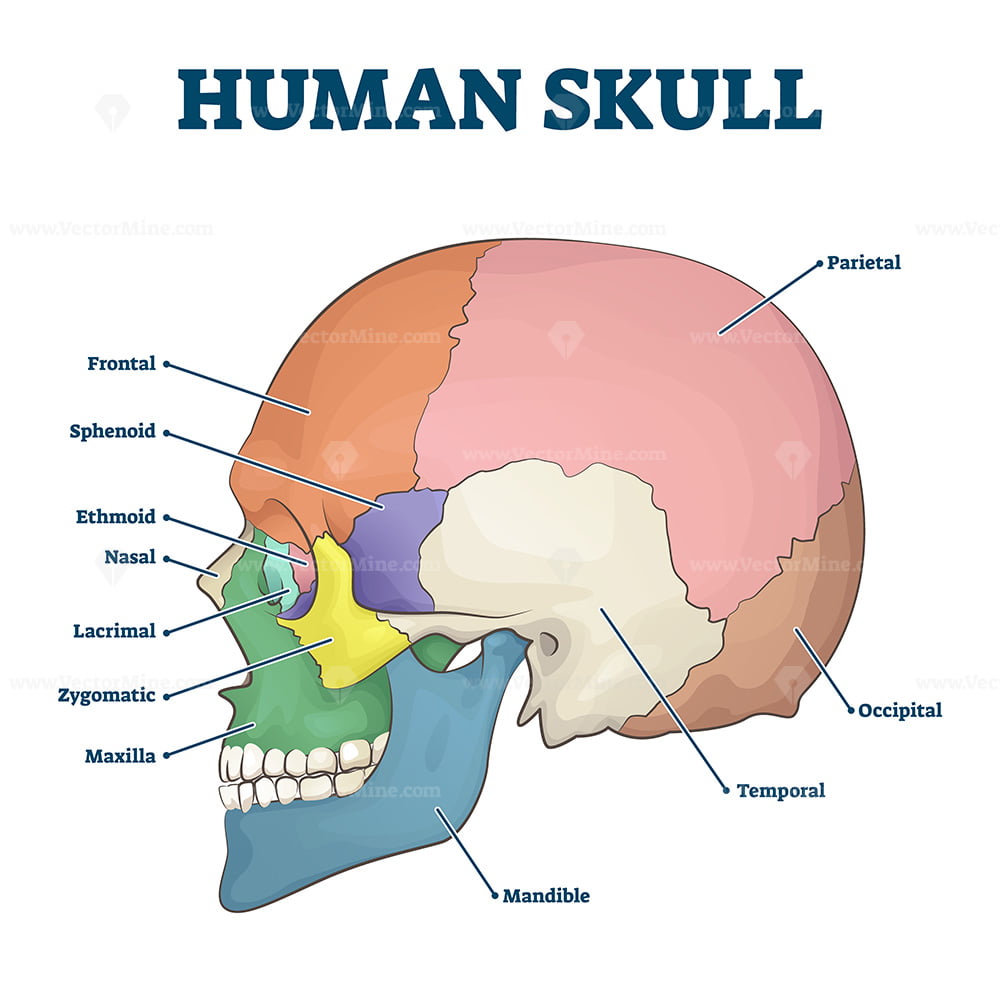
Human skull bones skeleton labeled educational scheme vector illustration VectorMine
The cranium (skull) is the skeletal structure of the head that supports the face and protects the brain. It is subdivided into the facial bones and the brain case, or cranial vault ( Figure 7.3 ). The facial bones underlie the facial structures, form the nasal cavity, enclose the eyeballs, and support the teeth of the upper and lower jaws.
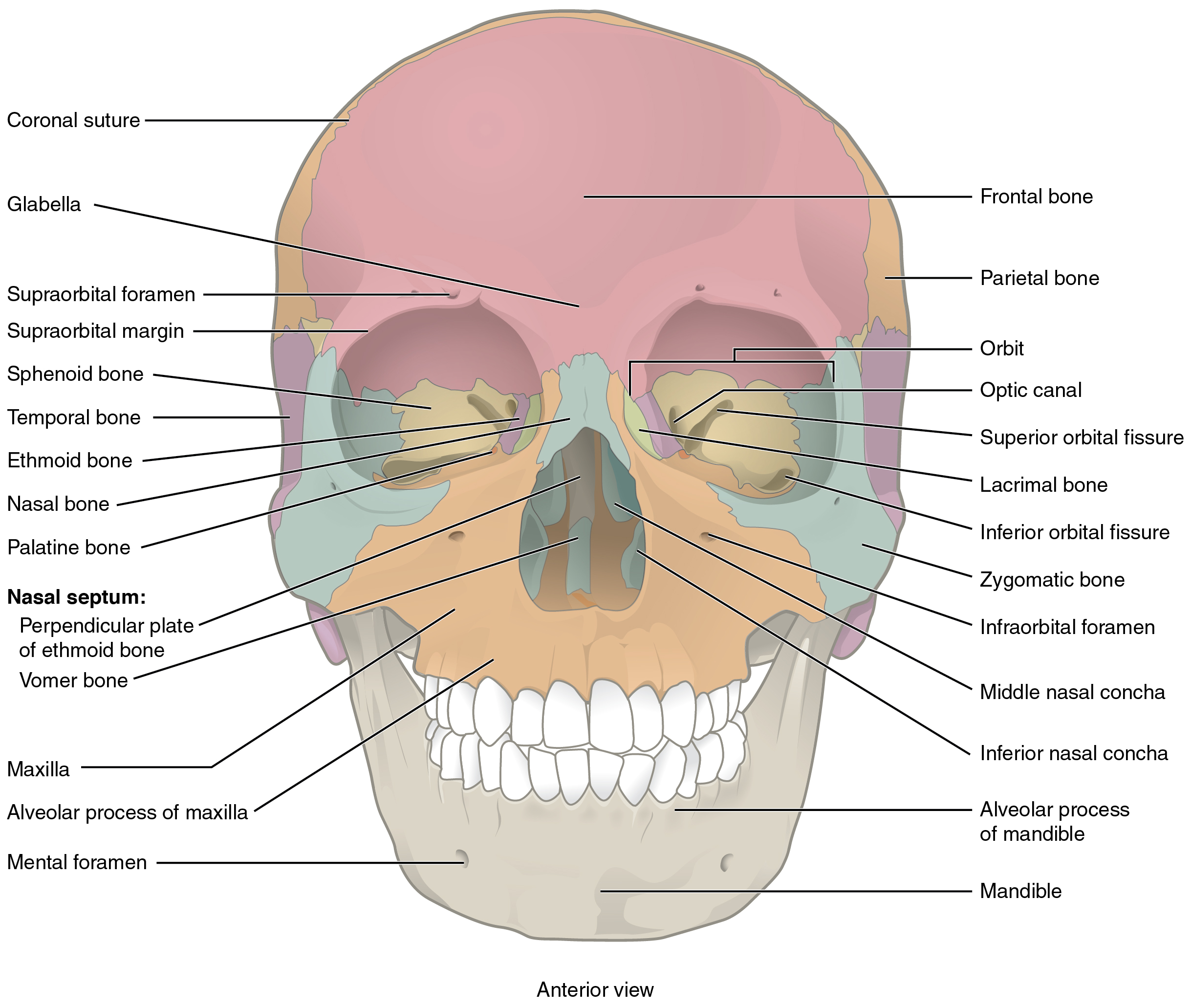
The Skull · Anatomy and Physiology
Skull The skull is a strong, bony capsule that rests on the neck and encloses the brain. It consists of two major parts: the neurocranium (cranial vault) and the viscerocranium (facial skeleton).
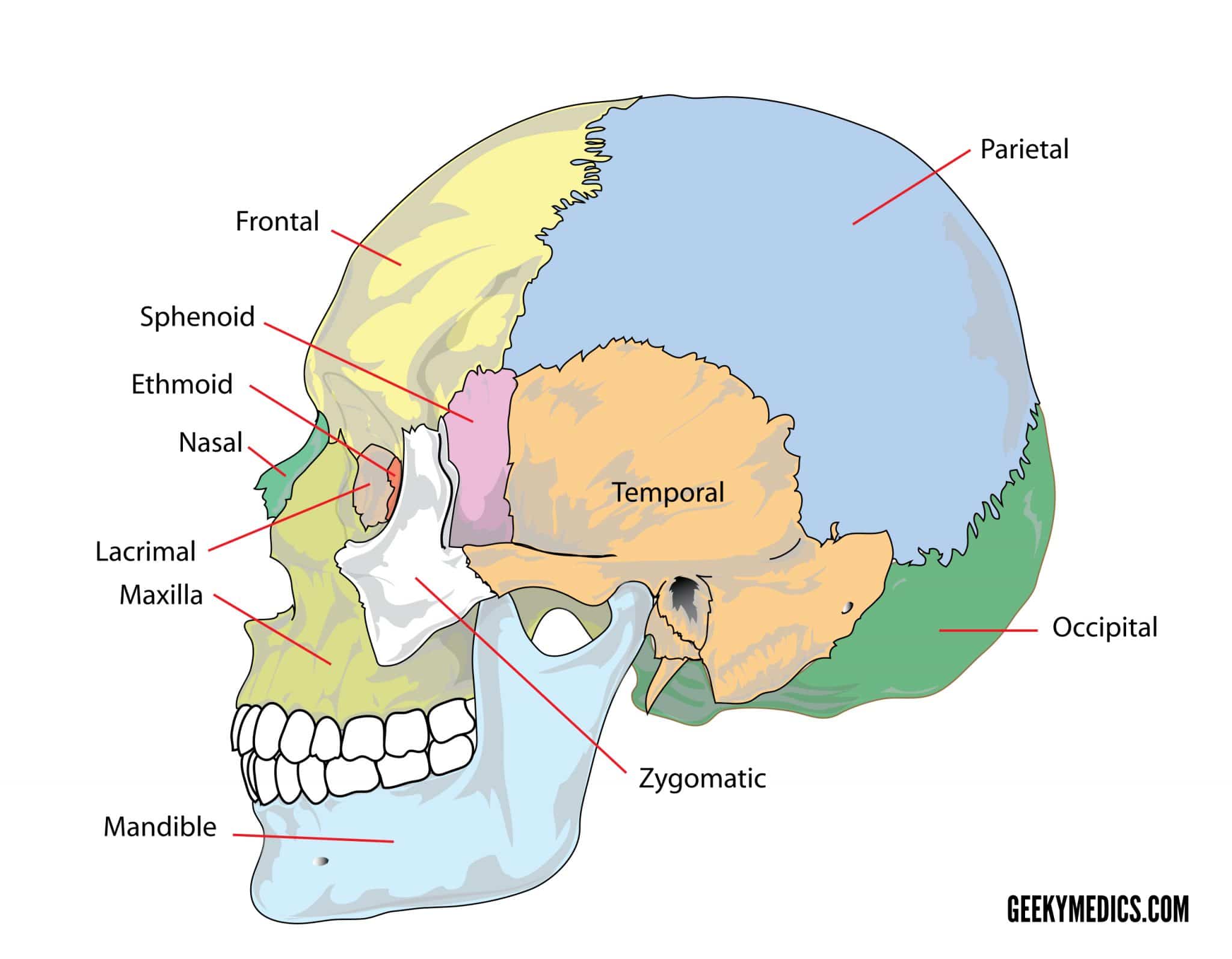
Bones of the Skull Skull Osteology Anatomy Geeky Medics
The human skull (Latin: cranium) is the skeleton of the head composed of 22 bones. Bones of the skull are joined together primarily by sutures. The primary function of the skull is to provide protection for the brain and sensory organs connected with it.
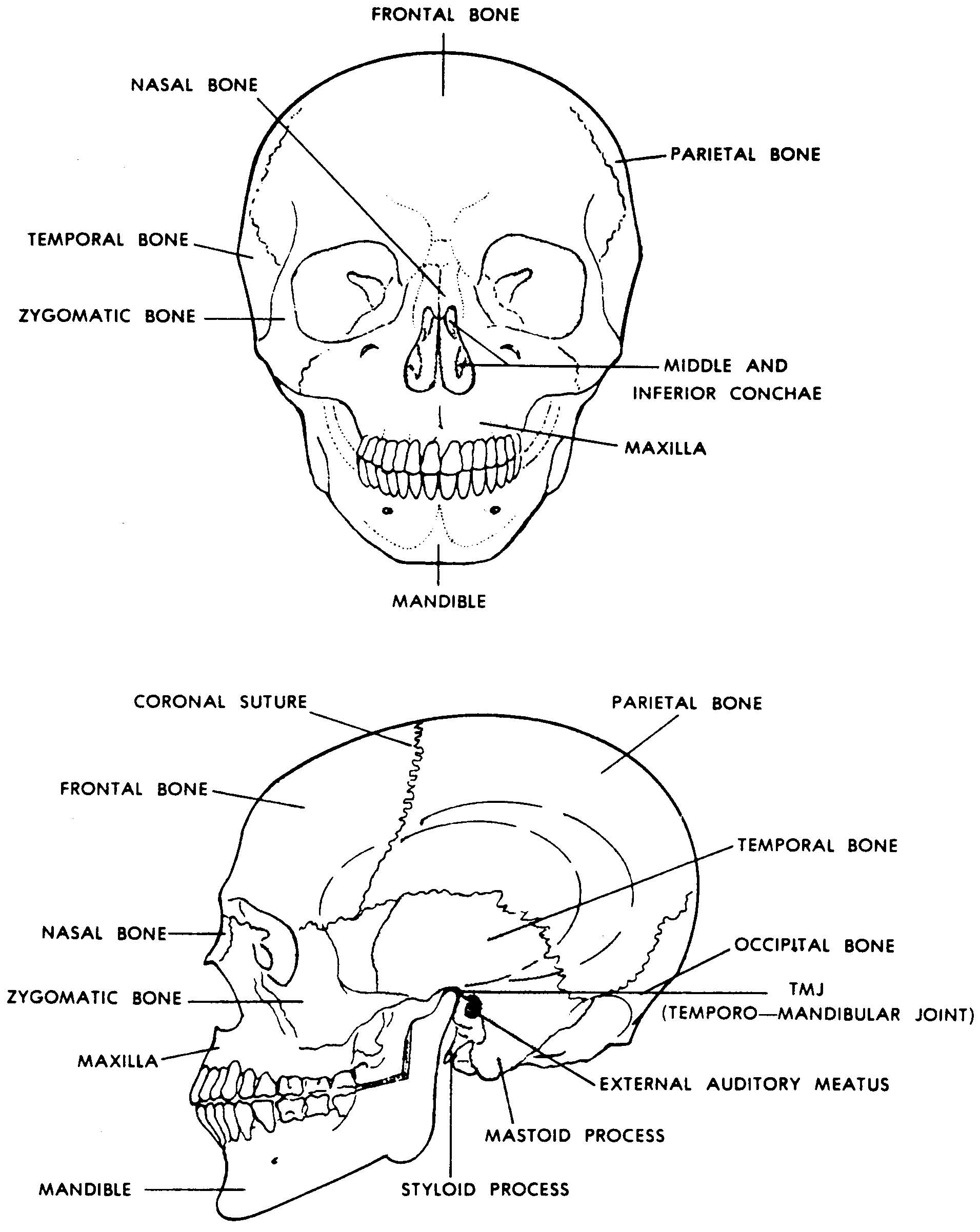
Images 04. Skeletal System Basic Human Anatomy
The Skull: Names of Bones in the Head, with Anatomy, & Labeled Diagram Skull Bones The skull is one of the most vital bony structures of the human body, as it houses and protects the most important organs, including the brain. There are 29 bones (including the hyoid and middle ear bones) that comprise the skull and give shape to the head.

Medical and Health Science Anatomy of Skull
We've created a blank skull diagram free for you to download as A PDF below. You can also download the labeled version and use this to make some notes. Ready to test your knowledge? Download PDF Worksheet (blank) Download PDF Worksheet (labeled)

Human skull diagram Royalty Free Vector Image VectorStock
BioDigital Human platform is an interactive 3D, medically accurate, virtual map of the human body—including over 8,000 individually selectable anatomical structures, 850+ simulated 3D health conditions and treatments.
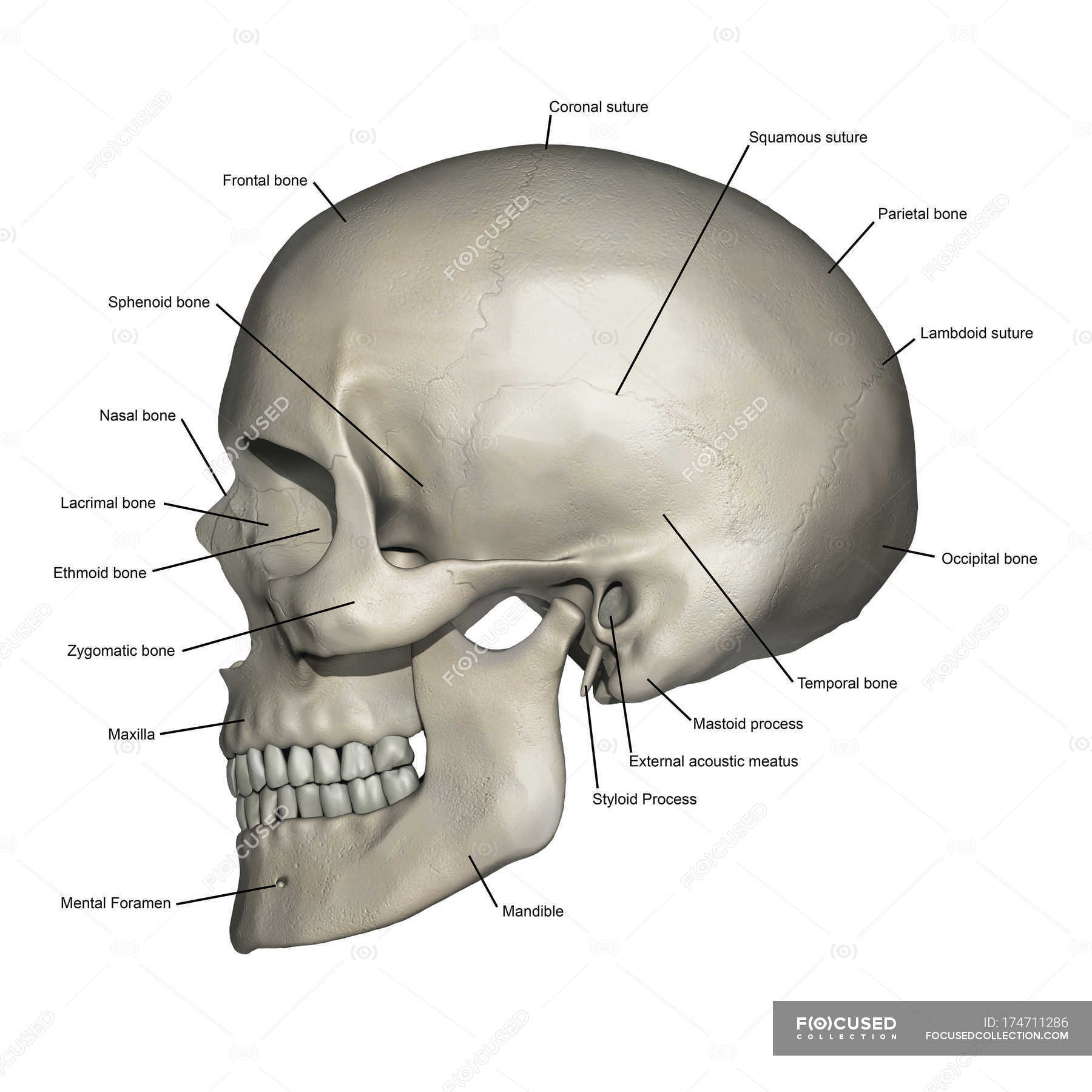
Lateral view of human skull anatomy with annotations — healthcare, skeletal system Stock Photo
The cranium (skull) is the skeletal structure of the head that supports the face and protects the brain. It is subdivided into the facial bones and the brain case, or cranial vault ().The facial bones underlie the facial structures, form the nasal cavity, enclose the eyeballs, and support the teeth of the upper and lower jaws.
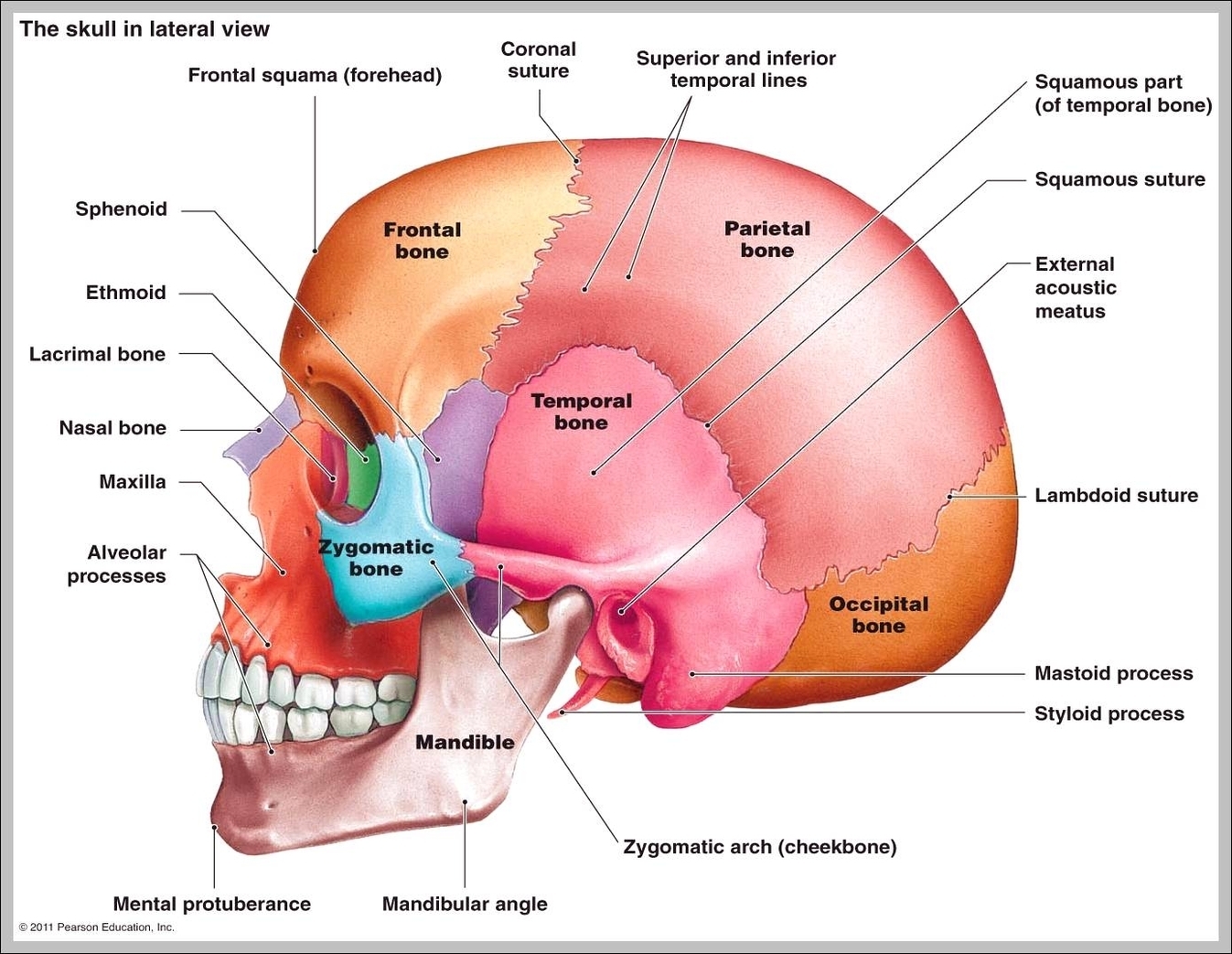
Human skull lateral view 2 Graph Diagram
Figure 7.3.1 - Parts of the Skull: The skull consists of the rounded cranium that houses the brain and the facial bones that form the upper and lower jaws, nose, orbits, and other facial structures. External Website Watch this video to view a rotating and exploded skull, with color-coded bones.
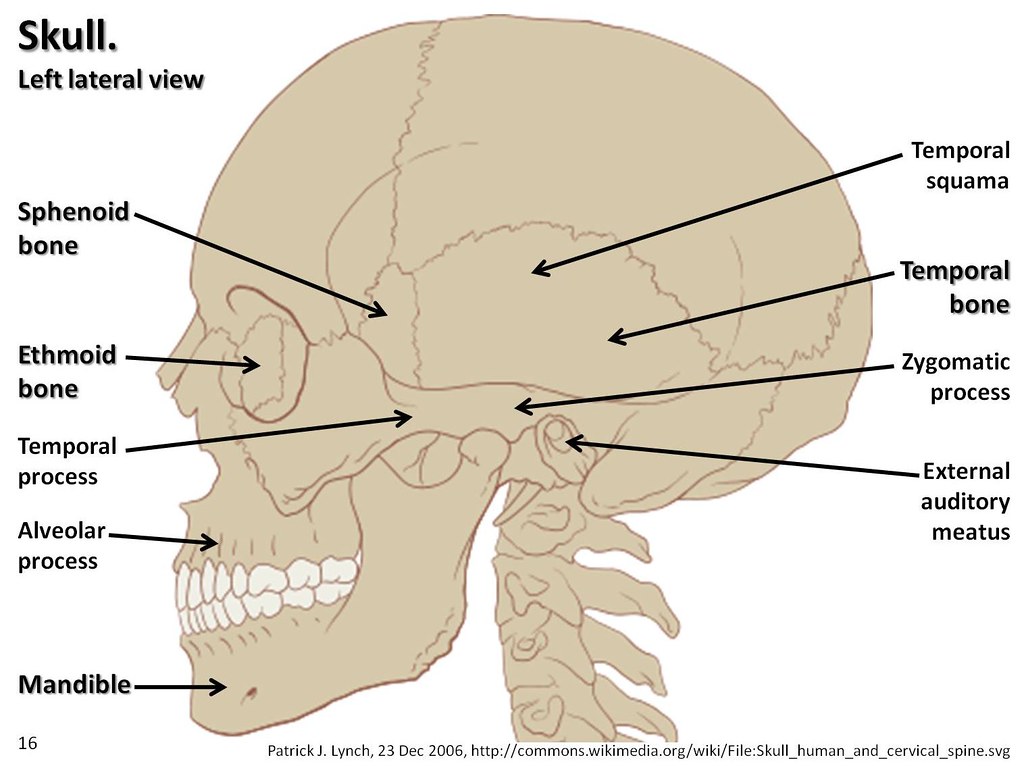
Skull diagram, lateral view with labels part 2 Axial Ske… Flickr
The skull is made up of 22 bones that articulate with each other - 8 cranial bones and 14 facial bones. The remaining 7 bones in the head (6 auditory ossicles and 1 hyoid bone) do not articulate with the rest of the skull, and they are often referred to as accessory bones of the skull as a result.

Pin on MED MAL MADNESS
The cranium, or skull, is composed of 22 bones anis d divided into two regions: the neurocranium (which protects the brain) and the viscerocranium (which forms the face).

The Skull Anatomy and Physiology I
Skull Pictures, Anatomy & Diagram | Body Maps Human body Skeletal System Bones of cranium Bones of cranium There are eight major bones and eight auxiliary bones of the cranium. The.